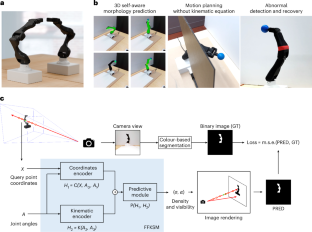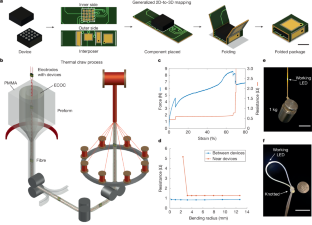2025-02-27 カリフォルニア大学バークレー校 (UCB)
<関連情報>
- https://news.ucsb.edu/2025/021777/scientists-match-earths-ice-age-cycles-orbital-shifts
- https://www.science.org/doi/10.1126/science.adp3491
洪積世の100年氷期周期における歳差運動、斜方位、離心率の異なる役割 Distinct roles for precession, obliquity, and eccentricity in Pleistocene 100-kyr glacial cycles
Stephen Barker, Lorraine E. Lisiecki, Gregor Knorr, Sophie Nuber, and Polychronis C. Tzedakis
Science Published:28 Feb 2025
Editor’s summary
Despite decades of research, precisely how the various parts of the solar insolation cycles affect glacial cycles is not known. Barker et al. took a new approach to answering this question by looking at the morphology of glacial inception and deglaciation. They found that those steps depend strongly on the relative phasing of precession versus obliquity, with precession having more influence on deglacial onset and obliquity being more important for reaching peak interglacial conditions and glacial inception. Thus, glacial-interglacial variability in the relevant period, called the 100,000-year world, is largely deterministic. —Jesse Smith
Structured Abstract
INTRODUCTION
Milankovitch theory suggests that the waxing and waning of enormous continental ice sheets across the Northern Hemisphere results from slight changes in axial tilt and the geometry of Earth’s orbit around the Sun, which influence the seasonal and geographical distribution of incoming sunlight. Changes in the tilt of Earth’s rotational axis with respect to the orbital plane (obliquity) cause variations in seasonality, with a period of ~41 thousand years (kyr), and strongly affect the total (integrated) summer energy received at high latitudes. Precession of the rotational axis (and of the orbit itself) causes variations in the timing of the solstice with respect to the Earth-Sun distance, with a period of ~21 kyr. Precession has most influence over peak summer intensity across mid- to high latitudes. The shape of Earth’s orbit (eccentricity) also varies from more to less circular, with a period of ~100 kyr (and ~400 kyr). Eccentricity has most influence on the amplitude of precession.
RATIONALE
Milankovitch developed his theory in the early 20th century, but it remained unproven until Hays, Imbrie, and Shackleton presented the first robust geological evidence to support it in 1976. Identification of the characteristic periods of precession and obliquity within a range of paleoclimate records confirmed that both parameters must play some part in the pacing of Pleistocene glacial cycles, but their precise roles remained obscure. Moreover, observation of a strong ~100-kyr periodicity was difficult to reconcile with the very weak direct influence of eccentricity. Since then, there have been many attempts to differentiate between the relative importance of precession versus obliquity, especially in the process of glacial termination (deglaciation). The biggest obstacle facing such an exercise is the difficulty in producing absolute ages for paleorecords with sufficient precision to differentiate between the direct influence of either parameter. We took an alternative approach that circumvents the need for such precision; we looked at the morphology of deglaciation-inception and compared that with orbital phasing.
RESULTS
We found a strong correlation between deglacial duration and the phasing of precession versus obliquity during termination, with the onset of deglaciation most likely driven by peak summer intensification (i.e., precession) in combination with rising obliquity, whereas obliquity alone is responsible for glacial inception. Our results can be explained by variations in the average latitude of northern ice sheets, with inception occurring at high latitudes under the influence of obliquity, and deglaciation reflecting the dual effects of precession and obliquity across fully extended glacial ice sheets. A protracted deglaciation occurs when the responsible change in precession starts early with respect to the phase of obliquity, effectively delaying the northward retreat of ice sheets toward their interglacial state. Finally, we found that the precession peaks leading to termination (which always coincide with increasing obliquity) follow directly after minima in eccentricity. This is consistent with suggestions that decreasing eccentricity can enable the growth of large ice sheets by reducing the amplitude of precession.
CONCLUSION
Our results suggest that ~100-kyr glacial cycles of the mid- to late Pleistocene are largely deterministic, allowing us to predict the occurrence and duration of all deglacial and interglacial periods over the past 900 kyr on the basis of orbital phasing alone. This permits us to make first-order estimates about the natural future of Earth’s climate in the hypothetical absence of CO2 forcing resulting from human activities.
 Morphology of glacial cycles reflects Earth’s orbital geometry.
Morphology of glacial cycles reflects Earth’s orbital geometry.
Variations in interglacial duration are dominated by the deglacial phase (double-headed gray arrows), which is a function of the phasing between precession and obliquity. Glacial termination begins with the first precession peak to start while obliquity is rising, after a minimum in eccentricity. Glacial inception then follows with the next decrease in obliquity. ‰, per mil; T1, Termination 1.
Abstract
Identifying the specific roles of precession, obliquity, and eccentricity in glacial-interglacial transitions is hindered by imprecise age control. We circumvent this problem by focusing on the morphology of deglaciation and inception, which we show depends strongly on the relative phasing of precession versus obliquity. We demonstrate that although both parameters are important, precession has more influence on deglacial onset, whereas obliquity is more important for the attainment of peak interglacial conditions and glacial inception. We find that the set of precession peaks (minima) responsible for terminations since 0.9 million years ago is a subset of those peaks that begin (i.e., the precession parameter starts decreasing) while obliquity is increasing. Specifically, termination occurs with the first of these candidate peaks to occur after each eccentricity minimum. Thus, the gross morphology of 100-thousand-year (100-kyr) glacial cycles appears largely deterministic.



